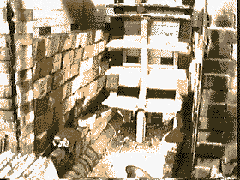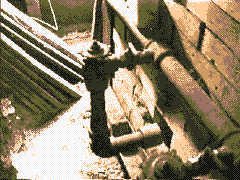

Index of all Pages
-
 <- Go to Back to Index Page ->
<- Go to Back to Index Page ->
- Index of all Pages
-
 <- Go to Directory of Categories Page ->
<- Go to Directory of Categories Page ->
- : Directory of Categories Page
-
 Go to the Ceramics Directory ->
Go to the Ceramics Directory ->
- The index of Ceramic Pages
-
 Go to Production Methods ->
My techniques for making pottery
Go to Production Methods ->
My techniques for making pottery
 Go to Pictures of Production methods #1->
Go to Pictures of Production methods #1->
- Pictures of production #1:
- Mixing clay,Wedging, Throwing clay
- Mixing clay,Wedging, Throwing clay
-
 Go to Pictures of Production methods # 2 ->
Pictures of Production #2
Go to Pictures of Production methods # 2 ->
Pictures of Production #2
Trimming pots, Making handles, Sieving glazes
 Go to Pictures of Production methods #3 ->
Pictures of Production #3
Go to Pictures of Production methods #3 ->
Pictures of Production #3
Siphoning glazes, Making Cone Packs, Glazing
 Go to Pictures of Production methods #4 ->
Pictures of Production #4:
Go to Pictures of Production methods #4 ->
Pictures of Production #4:
Bricking Door, Firing Kiln, Unloading Kiln

Building and firing kilns
There are several good books on the subject of
building kilns. Fred Olson, Michael Cardew,
Paul Soldner and Bernard Leach all have
much to say about building and firing kilns.
The kiln and its operation give the pottery life.
The trial by fire completes the work. Here are
some pictures of my kiln.
The flue to down draft kiln should be at least
as large as all the combined size of the burner
ports. The stack should be at least twice the height
of the kiln and twice the size of the exit flue.
This will ensure that your kiln has adquit draft
to the bottom of the kiln. The bagwall should be
at least 1/3 the size of the kiln's interior height.
I like to fire a schedual like this:
I start the kiln about 10pm( after loading all day)
I set my burners just high enough to not go out.
My kiln is in a tin shed and does not get wind on it.
There is no danger of this kilns' burners going out
or the pilot lights going off.
At about 3am, I turn my burners up to 10 cubic feet of gas
per minute. The primary air is turned all the way out.
At about 7am, I turn the gas up to 20 cf/m. I turn the
primary air on each burner to 8 turns open.
When cone 08 has gone down, I reduce the kiln for
45 minutes by pushing in the dampers in the stack
and causing the unburned gases to recirculate in the
kiln and seek oxygen from the ware.
After 45minutes of this reduction bath, I pull the
dampers back out and fire the kiln in oxidation. The kiln
now has a neutral draft to it. That is, there is no flame
comming out of the door peeps. There may even be a
positive draft to the kiln: Air is being sucked in. I leave
the kiln in this condition until the kiln reaches cone 9
in the middle of the kiln. When cone 9 is down in the
middle, I again push the dampers in to reduce glazes in
for 2 hours with back pressure of the unburned gases.
After 2 hours, I pull the dampers out and give the
kiln more gas and turn the primary air cocks out to
nine turns open. I leave the kiln in this condition
until cone 11 has gone down in the middle of
the kiln. If cone 9 has not gone down on the bottom
shelf in the front of the kiln, I open the air ports
further and push in the damper slightly and turn
the gas up a little more. When cone 12 is flat anywhere
in the kiln or cone 9 has gone down, I turn the gas
all the way down to just barely on and open the airports
all the way up. I leave the kiln in this condition for
45 minutes to clean out the kiln and help heal pinholing.
I turn off the kiln and then I seal up the burner ports and
the peepholes of the kiln. I cool the kiln for and two days.
I cant see working for weeks and weeks to make a kiln
load of pots and then running shelves and ware by unloading
too soon. It is very hard on the ware to cool the first time. So I
am patient and wait.
You are the